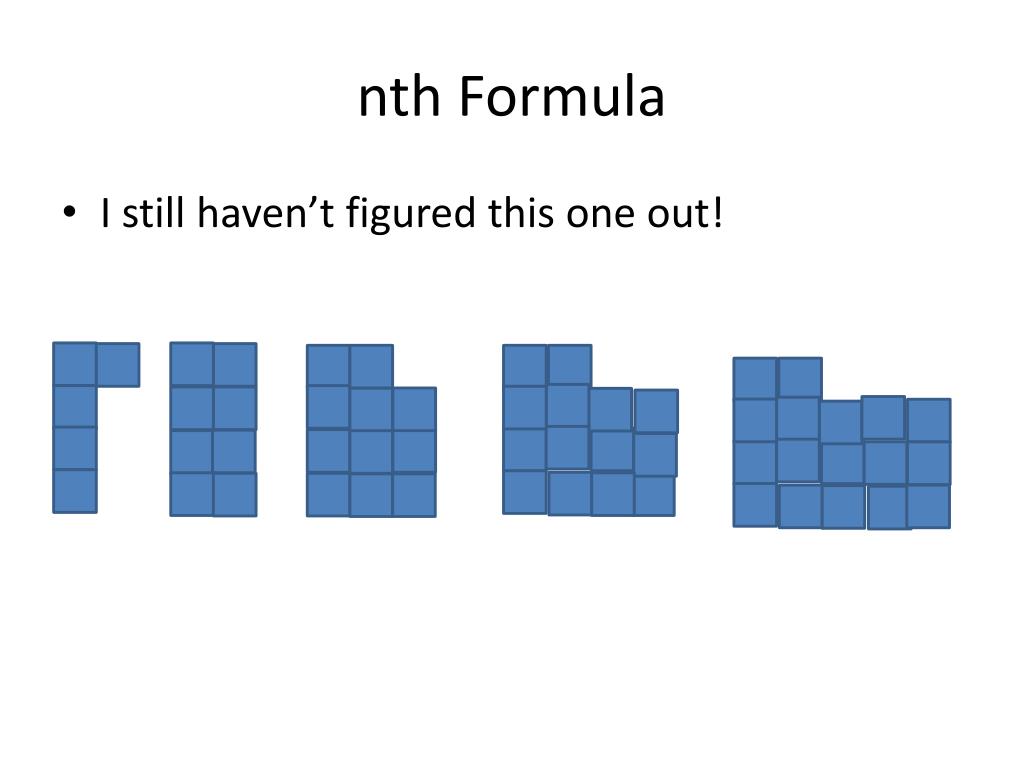

Nth term equation maker free#
Currently, over 80% of students at Overfelt qualify for federal free or reduced lunch, and under 50% of our students’ parents are high school graduates. Although the average cost to rent a house in Overfelt’s area is close to $3000 a month, the average annual family income is just over $60,000 a year. At Overfelt, approximately 80% of our student body consists of Latino/Hispanic students. In a city of over one million people, the East Side is home to predominately Latinos, with African Americans, Vietnamese, Filipinos, Cambodians, and Samoans making up smaller, but still significant ethnic populations. Those of us who live and work in and around the neighborhood of Overfelt, commonly refer to Overfelt as being located in the East Side of San Jose. When people hear of San Jose, they tend to think of Silicon Valley, high tech, and astronomical housing prices. Overfelt High School is located in San Jose, California. Overall, this unit serves as a supplement to enhance my existing textbook resources, to better support students in any course that works with linear, quadratic, and exponential sequences and functions. In addition to tabular models, geometric representations of sequences will be used as an alternative approach to represent sequences, leading to algebraic representations. This unit will look at how the common difference, second difference, or common ratio between consecutive terms of a sequence can be used to determine a sequence’s recursive and explicit equations. In textbooks, formulas are frequently just given to students based on specific types of sequences. Many of my students are able to observe patterns represented in the sequences, but struggle in taking those observations and translate translating them into algebraic representations. Note that some texts may use the term rule in place of equation.

They are also asked to identify key characteristics of the sequence, and to use these to write both recursive equations and explicit equations for a n, the nth term in the sequence. When given a few terms in a sequence, students are expected to classify the sequence type, as being potentially one of the three special ones, or “other”. This curriculum unit discusses each of these three types in the sections below. Many potentially infinite sequences are formed according to simple rules, and such sequences are also often referred to as “patterns”.Īt the high school level, students are introduced to three main special types of sequences: arithmetic (linear), geometric (exponential), and quadratic. For example, the sequence 2,4,6,8,10 is a finite sequence with five terms, while 2,4,6,8,10,… is an infinite sequence. Infinite sequences do not stop and are assumed to continue indefinitely. Finite sequences, are sequences that stop after a certain number of terms. Each number in a sequence is called a term. In mathematics, a sequence is defined as an ordered list of numbers. The table below shows the first 100 numbers in the Fibonacci sequence.įirst 100 numbers in the Fibonacci sequence.Sequencing Math DNA: Differences, Nth Terms, and Algebraic Sequences by Lawrence E.
Nth term equation maker plus#
Thus, Binet’s formula states that the nth term in the Fibonacci sequence is equal to 1 divided by the square root of 5, times 1 plus the square root of 5 divided by 2 to the nth power, minus 1 minus the square root of 5 divided by 2 to the nth power.īinet’s formula above uses the golden ratio 1 + √5 / 2, which can also be represented as φ.įirst 100 Numbers in the Fibonacci Sequence Named after French mathematician Jacques Philippe Marie Binet, Binet’s formula defines the equation to calculate the nth term in the Fibonacci sequence without using the recursive formula shown above.īased on the golden ratio, Binet’s formula can be represented in the following form:į n = 1 / √5(( 1 + √5 / 2) n – ( 1 – √5 / 2) n) Thus, the Fibonacci term in the nth position is equal to the term in the nth minus 1 position plus the term in the nth minus 2 position. The equation to solve for any term in the sequence is:
Nth term equation maker how to#
How to Calculate a Term in the Fibonacci Sequenceīecause each term in the Fibonacci sequence is equal to the sum of the two previous terms, to solve for any term it is required to know the two previous terms.


 0 kommentar(er)
0 kommentar(er)
